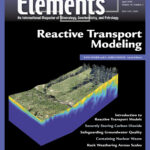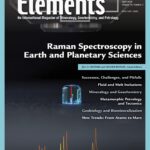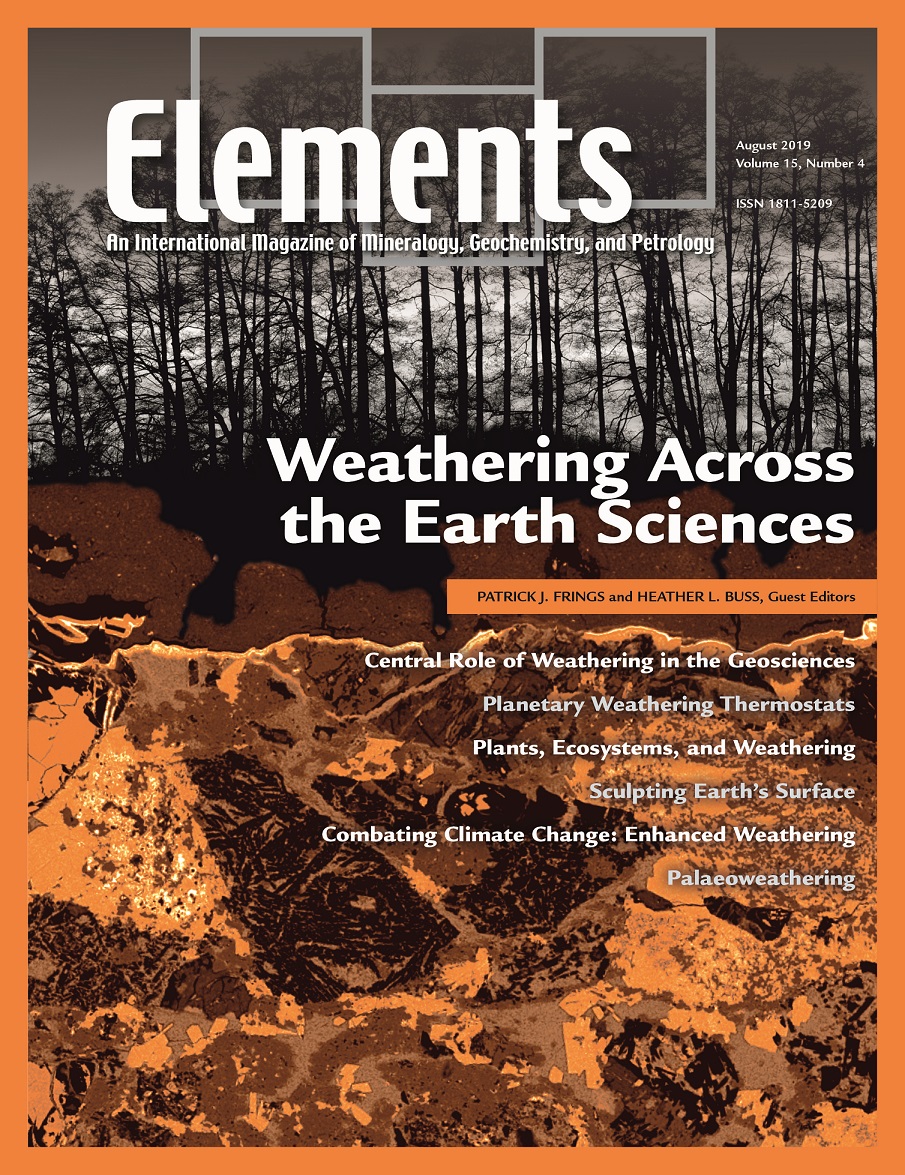
Reactive Transport Modeling, April 2019, Vol. 15, No. 2
June 28, 2024
Raman Spectroscopy In The Earth And Planetary Sciences, April 2020, Vol. 16, No. 2
June 28, 2024Weathering Across The Earth Sciences, August 2019, Vol. 15, No. 4
$20.00
This issue highlights the integral role of weathering processes across a range of geoscience fields. Chemical weathering – the loss of mass by mineral dissolution and export – is key to understanding how Earth’s skin functions.
Weathering Across The Earth Sciences
August 2019, Vol. 15, No. 4
This issue highlights the integral role of weathering processes across a range of geoscience fields. Chemical weathering – the loss of mass by mineral dissolution and export – is key to understanding how Earth’s skin functions. Weathering is the starting point for the biogeochemical cycles of most elements. It determines river and groundwater chemistry and provides nutrients to ecosystems. Weathering alters rock structure and susceptibility to erosion; soil and landscape evolution cannot be understood without considering the role of chemical weathering. Weathering of silicate rocks is a long-term sink for atmospheric CO2, and has been crucial in maintaining our planet’s habitability over billions of years … and may constitute a geoengineering strategy. The issue is the state-of-the-art on these topics and explores the linkages between them.
Why You’ll Love Elements Magazine:
- Expert Contributors: Articles written by renowned researchers in the field of geoscience.
- Engaging Content: Join a community of readers who are passionate about Elements.
- Exceptional Quality: Each issue is printed on high-quality paper with stunning visuals and detailed illustrations that bring complex scientific concepts to life.
Order your copy of the August 2019 issue of Elements magazine today and study weathering across the Earth sciences.
Related products
-
Early Earth, August 2006, Vol. 2, No. 4
$20.00The earliest Earth was a strange inhospitable world, yet transitions occurred culminating in the evolution of life within the first billion years. The preservation of a sparse and ambiguous rock record has encouraged debate.
-
Carbon Dioxide Sequestration, October 2008, Vol. 4, No. 5
$20.00Storage of carbon in the subsurface involves introduction of supercritical CO2 into rock formations beneath the surface of the Earth, typically at depths of 1000 to 4000 meters. Although CO2 is a relatively benign substance, the volume being considered is large.
-
Glasses And Melts: Linking Geochemistry And Materials Science, October 2006, Vol. 2, No. 5
$20.00Geological interest in studying melts stems from early recognition that melts play a fundamental role in determining the physical and chemical behaviour of magmas and magmatic processes. However, due to the inherent difficulties associated with working at high temperatures, much of the geological research over the last 30 years has used quenched melts or glasses as proxies for melts themselves.




